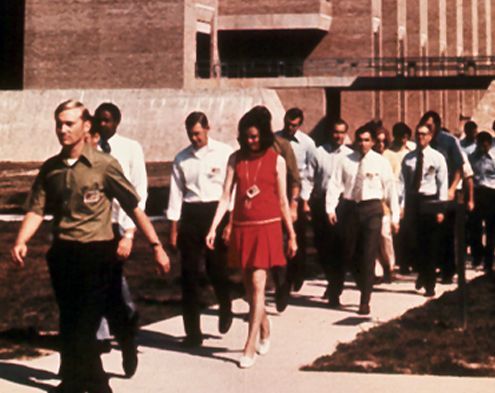
Joanne Pierce Misko: From Catholic Nun to Special Agent to the FBI
What made a Catholic nun from Niagara Falls, NY become a gun-toting FBI Agent?
“FBI Director J. Edgar Hoover had a firm rule: only men could be special agents in the FBI.” After his death in 1972, the Bureau’s acting director, L. Patrick Gray, changed the Prohibition Era-policy in part to keep up with the changing times. The feminist movement was in full swing that year and American women were challenging sexism in the workplace and beyond. One such woman was Joanne Pierce, a former Catholic nun who became one of the FBI’s first female Special Agents.
Pierce was born in 1941. She grew up in Niagara Falls, NY and attended a local Catholic high school. She earned a bachelor’s and master’s degree in History from two area colleges. In 1960, she joined the Sisters of Mercy convent and spent the next ten years teaching history and economics at Catholic schools in Niagara Falls and Olean, NY.
Eventually, Pierce began to have second thoughts about her future. She wanted to get married and start a family. “As she was contemplating leaving the convent, she heard [an] FBI agent give a talk to high school students at a career day in Niagara Falls.” Pierce was intrigued. When she inquired about potential openings at the FBI, the agent informed her that they were mostly hiring for clerical positions. “Undeterred, Pierce left the convent and headed for Washington [D.C.], where she was hired as [an FBI] researcher” in 1970. Her days as Sister Joanne were over.
In 1972, Pierce learned about the FBI’s policy change from her supervisor who asked if she had any interest in applying. He warned her that the special agent position would be rigorous and demanding, but Pierce was undeterred yet again.
That July, Pierce and former Marine Susan Roley joined 43 of their male counterparts at the FBI Academy near Quantico, VA. “They trained for a grueling two-mile run, pull-ups, and firearms shooting, [and] Pierce learned how to handle a .38 revolver, rifle, and shotgun. The two [women] also bunked together during the 14-week training course.” Pierce and Roley quickly proved their mettle. The men began to affectionately refer to them as ‘The Nun’ and ‘The Marine.’ Upon graduation, they made history as the first two female Special Agents to the FBI.
“In early 1973, [Pierce] was deployed to Wounded Knee, South Dakota, working 12-hour days for seven weeks during the American Indian Movement siege. At one point she found herself in an armored personnel carrier, taking hostile fire and feeding rounds into her fellow agents’ M16 rifles.” Tribal leader Russell Means was later charged “with assaulting Pierce as he aimed his weapon toward the carrier.” By the end of the 71-day occupation, two Sioux men were shot to death by federal agents and many others were wounded on both sides of the conflict. Pierce’s life had dramatically changed since her convent days.
Special Agent Pierce “spent the next [21] years dodging bullets, tracking down fugitives, conducting surveillance, helping seize millions of dollars from Florida drug dealers, investigating bank frauds and screening FBI applicants.” She spent most of her FBI career in Pittsburgh, PA, where she met and married fellow agent Michael Misko in 1981.
Joanne Pierce Misko made history two more times. In the late 1970s, she became one of the first female supervisors at FBI headquarters in Washington and in 1994 when she retired, she became the longest-tenured female agent in FBI history. Her retirement was bittersweet. While she was treated fairly by her coworkers, she believed that she was denied various promotions because she was a woman. So, she sued the FBI and the lawsuit was settled in 1996 under undisclosed terms.
Over 50 years ago, Joanne Pierce Misko broke the FBI’s glass ceiling. Currently, the FBI “has almost 14,000 special agents. Over 3,000 of them, or about 22.6%, are [women].”
Hope L. Russell, Ph.D.

